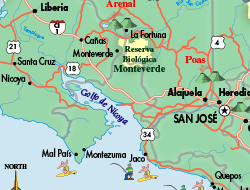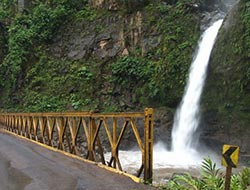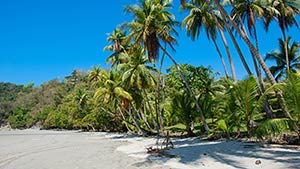Lunchtime means Casados for many Costa Rican tourists
Even the sodas have awesome food, Whole fish Casado
When you want to fully experience the unique flavors of Central American cuisine, order Casado, one of the staples of the Costa Rica food scene. The name of the dish means “married” in Spanish, so it is a fitting way to describe the dish as it is a marriage of a variety of food heaped all together on a plate.
Variety Is on the Plate
Some standard components of the meal include rice, beans, and a large helping of meat. The meat served can vary and may be pork, fish, chicken, or beef depending on the day. Other items on the plate may include salad, plantains, bread, cheese, French fries, and local fruits and vegetables. The Casado format allows for a variety of the side dishes as well, so you will see pasta salad, spaghetti, cabbage salad, or fried eggs next to your rice, beans, and meat.
Live Large
Casado is an ideal dish to have for lunch, traditionally the largest meal of the day. It is mainly locally sourced produce and meats that make up the majority of the plate, so you are tasting foods that literally cannot be found anywhere else. The dishes that make up the Casado plate are very simple, yet the combination of items give rise to complex flavors. Different locations in Costa Rica will have variations of the same dish.
Stop at a Soda
The Costa Rica restaurants that serve Casado run the gamut from luxury dining to self-serve cafeterias, but you will want to make sure to stop at a soda to experience Casado at its best. Sodas are small cafes found in every town that are usually open air and serve affordable and tasty food. Look for a soda sign hung outside a small building or a sign that says soda tipica to find one of these local eateries. Sodas offer either a buffet or menu service and are a great chance to socialize with locals and taste local specialties.
Special Sides
If you are lucky, you can enjoy one of the special side dishes that sometimes show up on a Casado plate. One of those dishes is called barbudos. To make this dish, cooks soak green beans in egg batter seasoned with cayenne pepper and fry them in the form of fritters which are served fresh and hot. Another tempting side dish is sweet plantains. To make this dish, plantains are cut into bite-sized slices and sautéed in a confection of butter, sugar, cinnamon, nutmeg, and cloves. The result is a caramelized treat.
You will likely find a typical food Costa Rica lives on, gallo pinto, at small local eateries. This is a rice and bean concoction that could be a quick meal all in itself. The color combination of the rice, beans, and seasonings reminds Costa Ricans of a spotted rooster, hence the dish’s name. The dish is seasoned with onions, cilantro, and chile dulce, a sweet bell pepper. Olla de Carne, a rich beef stew served over rice, is another treat not to be missed.
History of Casado
Casado’s origin lies in the lunches packed by wives and sent with their husbands who were laboring in the fields. Originally wrapped in a banana leaf, the components of the Casado were proteins, vegetables, fruits, and starches that would provide a balanced meal to fuel a hard day of work. Men would make their lunches piping hot by setting them out to heat in the full sun and have a home-cooked meal by lunchtime.
When you come to visit Costa Rica, be sure to experience this national Costa Rican food. When you seek out local places to experience Costa Rica food on your way to your next adventure, you will be rewarded with an authentic cultural encounter.
7 Days / 6 Nights
Starting at $978 per person
10 Days / 9 Nights
Starting at $1,440 per person











.jpg)


.jpg)



